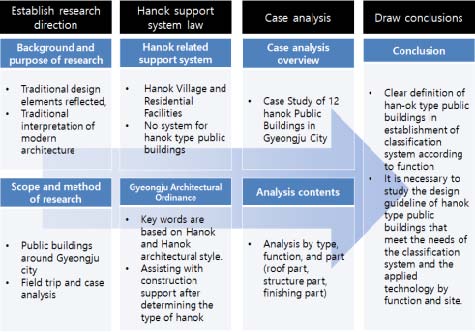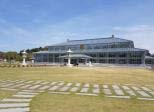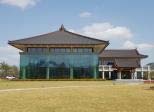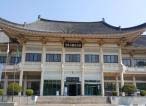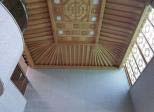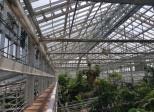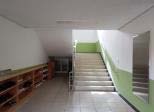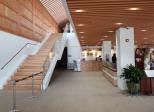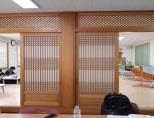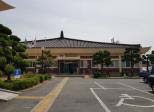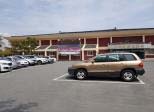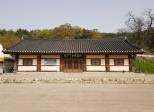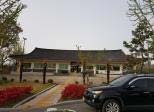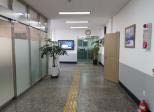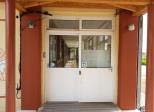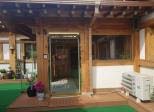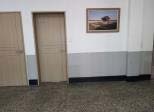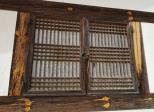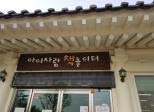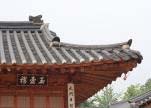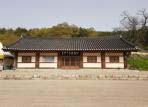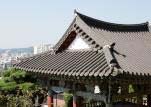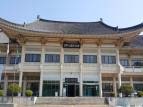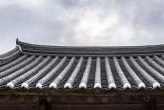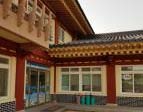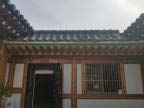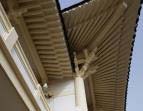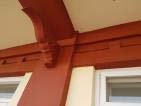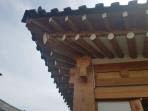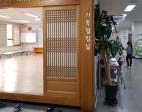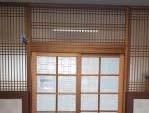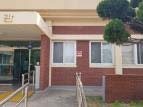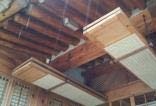
경주시 공공건축물의 한옥 요소 적용 실태 조사 분석
ⓒ Copyright Korea Institute of Ecological Architecture and Environment
Abstract
Hanok must be showing Korea's unique architectural style. The historical and cultural value of Hanok is one of the reasons for the existence of Korean architecture style. Recently, active research on how to use hanok is under way. According to this trend, public buildings are multi - use facilities open to the public and the public, so it is necessary to reflect the traditional elements of the hanok and the traditional interpretation of modern buildings. In this study, to elucidate the design techniques such as the spirit and space of traditional architecture, various examples of Gyeongju city are analyzed and analyzed to find out how to design hanok design applicable to public buildings in the future.
As a method of research, the application and reflection of the design elements of Han Ok 's public buildings to which the Ordinance on Public Buildings in Gyeongju City, Gyeongbuk Province is applied will be grasped through site visits. Analyze the design elements that can be applied and reflected by each part of the building. Based on the analyzed data, the possibility is analyzed synthetically and the results are derived.
The conclusions are as follows: First, it is necessary to establish a clear definition of hanok style public buildings and a classification system according to functions. Second, it is necessary to study the design guideline of hanok style public buildings that meet the requirements of public buildings, and the applied technology by function and site. Specific design techniques and design methods such as design guidelines and an appropriate design archive that can meet the requirements should be presented.
Keywords:
Public buildings, Hanok element, Application status키워드:
공공건축물, 한옥 요소, 적용 실태1. 서론
1.1. 연구의 배경 및 목적
한옥은 우리나라의 건축양식 고유의 특색을 보여주는 것임에 틀림이 없고, 한옥이 가지는 역사적∙문화적 가치는 우리나라 건축양식의 존재 이유 가운데 하나라 할 수 있다. 최근 한옥에 대한 우리나라의 관심은 지속적으로 증가하고 있는 추세이고, 그에 따른 전통성 계승을 위해 다방면으로 다양한 시도와 연구가 지속되고 있다. 한옥기술개발연구, 신한옥 등이 활발하게 연구되고 있으며, 단순한 한옥만의 연구가 아닌 한옥 고유의 정신, 예술, 생태, 환경 등 여러 분야를 계승하면서 현대적 관점의 비경제성, 단열, 기밀, 설비 등 결점을 해소하기 위한 현대건축과의 조화(調和) 등에 관한 연구가 뒤따르고 있다.
이 같은 시대적 흐름에 따라, 그 적용범위도 주택은 물론 상업시설이나 공공건축물에까지 그 범위를 확대해가고 있는 실정이다. 특히 공공건축물은 그 성격상 공공성을 띠면서 시민이나 대중에게 개방된 다중이용 시설이기 때문에 한옥의 전통의장요소 반영, 현대건축물의 전통적 해석, 경제성과 시공성 향상 등을 적용시킬 경우 우리나라 고유의 한옥 정신을 새롭게 해석하고 확대 보급하는데 유리함과 동시에 새로운 건축 패러다임을 창조하는데 일익을 담당할 수 있을 것으로 보인다.
이에 본 연구에서는 경주시 소재 한옥형 공공건축물 12건의 사례를 분석하여 경주시 한옥형 공공건축물의 한옥 요소(의장요소 등)이 적용된 정도, 부위별 특징 및 조례 및 법령으로 인해 규제되거나 지원되는 정책들을 살펴본다. 또한, 사례 분석을 중심으로 추후 계획 될 한옥형 공공건축물들에 대한 한옥 요소 적용 가능성에 대한 내용을 도출하는 것을 목적으로 한다.
1.2. 연구의 범위 및 방법
2000년대 초 도입된 지정문화재 제도를 보완하고, 근대문화 유산의 보존, 보전 및 실제 활용을 위해 도입된 등록문화재 제도는 제도 도입 취지와는 다르게 문화재를 단순 보존, 보전의 가치로 인식하지 않고 지역과 경제 활용을 위한 수단으로 전락하였다. 이에 각 지방자치단체는 위의 제도의 본 목적에 맞도록 한옥에 관한 지원 조례 건축자산법 , 제정 등으로 한옥마을 조성, 공공건축물에 대한 전통성 부여 등 활발한 움직임이 보이고 있다.
이에 본 연구의 범위는 상기 내용에 가장 적합한 형태를 보이며 또한 역사문화도시로 선정되어 한옥의 확산 및 보급을 위해 한옥마을 조성, 공공건축물에 대한 전통성 부여, 한옥 보조금 지원 조례 등으로 활발한 사업을 전개하고 있는 경상북도 경주시의 공공건축물 및 조례로 한정한다.
연구의 방법으로는 경상북도 경주시의 공공건축물 관련 조례가 적용된 한옥형 공공건축물의 의장요소 적용∙반영 현황과 개요를 현장답사를 통해 파악하고, 건축물의 부위별 적용∙반영이 가능한 의장요소를 분석한다. 분석한 내용을 토대로 경주시 한옥형 공공건축물의 의장요소 적용∙반영 가능성을 종합적으로 분석하여 결과를 도출한다. 연구 흐름도는 다음과 같다(Fig. 1.).
1.3. 선행연구 검토1)
본 연구에 앞서 선행연구의 키워드는 ‘한옥’ 과 ‘공공건축물’ 및 ‘한옥형 공공건축물’에 한하여 각각 검토하였다.
국내에서 한옥과 관련된 최근 연구의 동향으로는 건축법상 지방자지단체의 한옥에 대한 정의와 흐름에 대한 연구가 진행되고 있다. 특히 국토교통부의 「한옥활성화 실천방안」연구는 건축법상 한옥을 정의(定義)내렸으며, 최근 신한옥에 대한 활발한 연구를 진행중인 한옥기술개발 연구단의 연구에서는 지방자치단 체별 조례에 의한 한옥의 정의와 그 특징 및 신한옥 구축모델과 설계 라이브러리 등 공법의 측면에서 연구가 진행되고 있다.
국내 최근 공공건축물에 대한 연구는 2000년대 초부터 관심도가 높아짐에 따라 연구되었다. 공공건축물에 대한 정의가 내려지면서 공공건축물에 대한 연구방향은 가치향상을 위한 정책을 제언하거나 그 유형을 분류하는 것으로 검토되었다.
‘한옥형 공공건축물’에 대한 연구는 그 개념을 정립한 조성호(2014)의 연구 이래 점진적으로 증가하고 있다. 김선정(2013)은 전라남도 지역의 사례를 들어 현대한옥 디자인 관점에서 유형을 분류하였다. 분야별 연구로는 공공건축물 분야 중 대표적인 도서관에 대한 분석으로 조상연(2016)은 어린이도서관 거주후평가(POE)의 방법으로 한옥형 어린이도서관 계획가능성과 건축계획을 제안하였다. 이진경(2016)은 한옥형 공공도서관이 한옥형 복합문화공간으로써의 수행될 수 있도록 물리적 접근성을 분석하였다. 오희명(2016)은 한옥형 도서관의 질적 가치 향상 및 보편화∙대중화를 목적으로 건축행위에 따른 한옥형 도서관의 유형을 분류하였다.
시공과 공정관리 분야에서도 한옥형 공공건축물에 대한 연구가 이루어지고 있지만, 대부분 연구의 범위가 ‘신한옥형 공공건축물’에 국한되어 있지만, 시공법과 의장요소 차용가능성이 있는 것에 의의가 있다. 천국천(2016)의 연구에서는 신한옥형 공공건축물 실증구축 3건의 사례를 들어 구조유형에 대한 분류 및 정의를 내렸다. 신한옥 보급 및 확산을 목적으로 한 연구로는 조성호(2015)는 철근콘크리트조 신한옥형 공공건축물의 계획 유형과 표현 특성에 대한 분석으로 새로운 디자인의 가능성을 모색하였고, 지붕부 계획 시 설계자간 원활한 의사소통과 다양한 디자인 방안을 제시한 박주홍(2016)의 연구가 있다. 공정관리 분야에서는 서정승(2016)의 실증구축된 3건의 사례를 들어 효율적인 공정관리를 위한 개선방안을 제시한 연구가 있다.
이상과 같이 한옥형 공공건축물에 대한 여러 분야에서 연구가 진행되고 있으나 관련 연구의 동향이 주로 한옥형 공공건축물의 유형분류나 물리적 특징을 분석한 내용에 치중되어 있다. 본 연구에서는 경주라는 특정 지역 중심의 한옥형 공공건축물에 대한 특징과 해당 지역의 조례 등 제도적 지원 및 제한에 대한 연구를 진행하는 점에서 기존 연구와 차별성을 가진다(Table 1.).
2. 이론적 고찰
2.1. 한옥 관련 지원제도 현황
2000년대 초부터 활성화되고, 여러 차례의 개정되어온 한옥관련 지원제도는 북촌한옥마을과 전주한옥마을의 활성화 사업성공으로 한옥마을에 대한 사회적 관심이 높아졌다. 이에 따라 정부는 지역균형 정책2), 친환경 녹색성장 정책3) 등의 사회적 배경 아래 각 지방자치단체는 중앙정부의 지원을 받아 한옥 관련 지원제도를 전개하였다. 서울시의 경우 ‘성북동 한옥마을’, ‘은평한옥마을’ 등과 같은 새로운 한옥마을 조성을 추진하였으며 각지방자치단체는 ‘전주 한옥마을’의 성공사례에 힘입어 활발한 움직임을 보이고 있다. 그러나 현 제도에서는 한옥형 공공건축물에 대한 명확한 지원기준이 확립되어있지 않고 있으며 한옥마을조성, 주거시설의 한옥화, 문화재 진흥 측면을 중심으로 한옥 보조금을 지원하고 있는 실태이다.
전국의 한옥 관련 지원제도에서 신축공사일 경우 총 공사비의 한도 50% 내에서 최소 3000만원부터 최대 8000천만 원까지 공사비를 지원(2017년 기준)한다. 또한 증축, 개축 및 수선에 대해서는 서울시는 수선까지 허용하여 최대 6000만원까지 지원이 가능하며 인천광역시와 전라북도의 경우 최대 2000만원까지 지원한다. 지원제도가 없는 지역으로는 경기도(도 지원제도 2020년도 시행 예정. 단 수원, 남양주, 광주는 지자체별 지원)지역과 대전광역시, 울산광역시, 제주도가 있다.
일반 한옥지원제도와 다르게 ‘특별 보존 및 육성지역 한옥지원 조례’가 제정된 지역으로 경상북도 경주시, 전라북도 익산시, 충청남도 공주시, 부여군이 있으며 위 지역의 경우 최대 1억 원까지 공사비 지원이 가능하다. 전국 한옥지원제도와 특별 조례가 해당된 지역의 조례 내용을 정리하면 다음과 같다(Table 2, 3.).
2.2. 경주시 한옥 관련 조례
한옥마을 조성 및 근대건축물의 전통화가 이루어지기 전의 한옥에 대한 이미지는 국보, 보물, 사적 등 문화재로의 인식이 강했다. 이에 2001년 등록문화제 제도가 도입 및 시행되었으며 문화재보호법에 따라 문화재위원회 심의를 거쳐 지정문화제가 아닌 문화재 중 보존과 활용을 위해 조치가 필요한 것을 등록할 수 있다. 그러나 제도 도입 이후 본래의 취지와 다르게 문화재를 단순보존 및 보전의 가치로 인식하지 않고 지역경제 활용을 위한 수단으로 전락하였다 이에 각 . 지방자치단체는 등록문화재 제도와 별개로 한옥을 대중화하기 위해서 관련 조례 및 법령을 제정하며 한옥마을 조성 등 다양한 시도로 보급 및 확산에 힘쓰고 있다. 활발하게 진행되는 지역 중, 한옥건축물 보급률이 가장 높은 경상북도 지역의 경주는 역사문화도시로 선정된 이래로 한옥의 확산 및 보급을 위해 한옥마을 조성, 한옥 보조금 지원(기와 사용 등)을 통해 활발한 사업을 전개하고 있다.
경주시의 한옥형 공공건축물에 대해 적용되는 건축법령과 조례를 파악하기 위해 제정된 법령 및 조례를 조사하였다. “경주시 고도보존 및 육성에 관한 조례”에 따르면 경주시 역사문화도시로 조성하기 위한 건축에 관련된 지방자치단체 법규상에서 고도의 보존, 육성에 관한 사항을 규정하고 있다. “경주시 건축조례”의 주요 목적은 시민 생활개선, 복리증진, 교육환경증대 등을 위한 행정적인 지원 방안의 기반을 조성하는 것이다. 나아가 “한옥 등 건축자산의 진흥에 관한 법률(이하 한옥등건축자산진흥법)에 의하면 국가 건축문화 진흥과 경쟁력 강화하기 위해 한옥 등 건축자산을 보전, 활용 및 미래건축자산 조성에 중요사항을 규정하고 있다.
경주시 건축조례, 경주시 도시계획 조례, 고도보존 및 육성에 관한 특별법, 경주시 고도보존 및 육성에 관한 조례 중에서 한옥형 공공건축물에 적용할 수 있는 주요한 조항은 10항이 있다. 그러나 해당 조항은 공공건축물에 한정된 조례가 아닌 전범위적 건축물에 대해서 그 범위가 지정되어 있다.
조례의 핵심 키워드로는 ‘한옥’과 ‘한옥건축양식’에 맞추어져 있다. ‘한옥’과 ‘한옥건축양식’은 경주시에서 명시한 기준에 따라 심의를 통해 건축물 신축 기준 한옥이나 한옥건축양식을 사용하거나 유사한 외관형태, 기와 사용여부 등을 판단 후 건축보조금을 지원한다. 물리적인 제한으로는 역사문화도시 조성 보존 및 보전을 위해 경관을 고려하여 고도를 3층 이하로 제한하였고, 미관지구의 경우 2층 이하로 제한하고 있다. 주요 해당 조례는 다음과 같다(Table 4.).4)
3. 경주시 한옥형 공공건축물 사례분석
3.1. 분석대상 범위 및 부위별 분석방법
앞 장에서 도출된 전국의 공공건축물의 현황 및 분석을 통해서 전국의 공공건축물은 전체 비중이 매년 증가하는 추세를 보이고, 앞으로의 공공건축물 분야의 노후화로 신∙재축될 공공건축물의 수요가 발생할 것으로 사료된다.
이에 본 연구에서는 한옥형 공공건축물이 가지는 의장요소 적용가능성 분석을 위해 분석대상의 지역적 범위를 역사문화도시로 지정되어 건축자산 보전과 활용 및 우리나라 건축문화 전통성 확보에 이바지하고 있는 경상북도 경주시로 선정하였다. 또한 기능적 범위로는 공공건축물 중 차지하는 비중이 높은 제1종근린 생활시설, 교육연구시설, 문화 및 집회시설, 업무시설로 한정하였고, 운영 및 관리의 주체의 범위는 군사유지와 다중소유지를 배제하고 국유, 도유로 한정하였다. 대상의 유형은 이재혁(2017)의 연구5)에서 분류한 신한옥형 공공건축물, 신한옥, 정통한옥, 한옥풍 건축으로 한다. 내용은 다음과 같다(Table 5.). 사례분석의 일관성, 통일성 확보와 각각의 차이를 좁히고 상이점 해석을 위해서 현장답사를 통해 경주시 한옥형 공공건축물의 의장요소가 적용된 조사된 사례의 유형과 각 건축물의 부위∙분야별 분류의 체계를 정립할 필요가 있다고 사료된 바, 사례의 유형과 부위별로 분류하였다.
분석대상의 한옥형 공공건축물 유형은 이재혁(2017)의 연구에서 한옥의 유형을 4가지로 정리한 내용을 참고하였다. 또한 정리된 유형에 기능과 용도별로 세밀하게 분류하여 사례를 분석하였다. 또한 각각의 건축물에 적용된 의장요소가 각기 다른 형태를 보이고 있으므로 본문에서는 그 부위를 지붕부, 구조부, 마감부의 3가지로 분류하였다. 내용은 다음과 같다(Table 6.).
3.2. 경주시 한옥형 공공건축물 사례 개요 및 분석
앞장에서 다룬 분석대상 12건에 대한 현장답사를 진행하였다. 조사된 12건 대상 중 정통한옥 공공건축물 1건, 신한옥형 공공건축물 0건, 신한옥 공공건축물 1건, 한옥풍 공공건축물은 10건이었다. 기능 및 용도별 분류는 교육연구시설 7건, 제1종 근린생활시설 1건, 공공업무시설 1건, 문화 및 집회시설 3건으로 분류되었다. 운영의 주체는 경주시가 직접 운영하거나 위탁으로 운영하는 경우가 있다.
대상의 부위별 분류 방법으로 분석한 내용은 다음과 같다. 먼저 지붕부의 형태는 모임지붕, 팔작지붕, 눈썹지붕, 맞배지붕의 형태를 띤다. 모임지붕이나 팔작지붕의 경우, 지붕부 높이가 건축물 기준 약 1층의 높이를 차지하는데, 이는 경주시 고도보존 및 육성에 관한 특별법 제2조 1항 경주 고도보존지역 책정, 경주시 도시계획 조례 제52조, 제65조에 해당하는 것으로 확인되었으며, 기와 사용과 지붕부 형태가 강제되기 때문에 타 지역의 한옥형 공공건축물과 차이를 보인다. 건축물의 총 높이가 지상 2~3층의 한계점으로 보아, 그 규모가 지상 1~2층일 경우 모임 지붕이나 팔작지붕의 형태로 고도보존을 지키면서 기와를 놓기 위한 지붕 구성으로 볼 수 있다. 이에 반해 평지붕구조에 눈썹지붕 혹은 눈썹지붕만의 외형을 차용한 경주교육청, 경주시청소년수련관, 경주동궁원의 경우에는 건축물의 규모에서 이미 고도보존 조례에 의해 한계를 보이기 때문에 지붕부 높이를 높이지 않는 눈썹지붕을 차용한 것으로 사료된다. 경주 시립도서관, 양동초등학교, 아이사랑책놀이터의 경우 서까래를 콘크리트로 외형 차용하여 지붕부에서 전통성 확보를 위한 의장사용도가 높게 나타나 서까래 외형 차용을 하지 않은 사례와 비교된다. 기와의 경우 경주시 고도보존 및 육성에 관한 조례 제20조 2항에 의해 보조금이 지원되는 사항으로 전통 토기와를 주로 사용하며, 눈썹지붕을 사용하는 사례의 경우 플라스틱 경량기와 혹은 차광판을 사용하는 경향을 보였다. 지붕의 곡(曲)을 표현한 사례는 경주시립도서관이 유일하였다.
구조부의 형태로는 황룡사역사문화관, 새화랑유치원을 제외한 사례들이 ‘ㅡ’자의 장방형 평면의 형태를 띤다. 지붕부 기와의 하중을 견디기 위해 주 구조부는 대부분 철근콘크리트구조로 구성되어있고, 정면부를 포함한 외기둥을 돌출한 형태로 전통방식의 재료를 사용하지 않지만 그 형태는 외형을 차용한 것으로 사료된다. 벽체구조도 역시 대부분 철근콘크리트구조, 시멘트벽으로 구성되어 현대식 마감재를 사용하였지만 일부 사례에서는 시멘트 재료로 전통방식의 방, 창방, 소로, 포작 등의 외형을 차용하였다.
실내외 마감부는 기능상 사용한 특수한 마감을 제외하고 대부분 현대건축재료로 마감하는 경향을 보였다. 하지만 실의 기능상 전통과 관련된 기능을 가진 경우(경주시립도서관의 열람실, 경주시청소년수련관의 예절실)에는 온돌마루, 목재 및 한지를 사용한 경우도 있다. 예외적으로 경주교육청은 메인 홀 공간에 전시용 목구조를 천장마감에 사용하고 전통식 창호를 사용하여 외형적 차용은 아니지만 전통성 확보를 위한 장치라고 사료된다. 대상의 개요 및 분석내용은 다음과 같다(Table 7, 8.).6)
3.3. 한옥형 공공건축물 적용 부위별 의장요소 특징
공공건축물의 전통성 부여 및 한옥화는 사회적 측면에서 현대인의 삶의 질 향상과 단순 주거인식에서의 변화와 그에 따른 관심이 증가하였다. 그에 따른 공공건축에서의 대응은 경주시 한옥형 공공건축물의 사례 분석 내용으로 보아 미진한 수준이라고 사료된다. 따라서 전통문화와 친환경건축에 대한 관점에서의 공공건축 전통성 부여 및 한옥화는 선택적인사항에서 필수적인 사항으로 제고할 수 있다. 이에 최근 이루어지고 있는 한옥 보급에 대해 현대인들이 이용하기 쉽도록, 다양한 체험을 할 수 있도록 파급효과가 큰 공공건축물의 전통성 부여 및 한옥화가 구체적으로 이루어져야 한다.
이상의 내용과 같이 공공건축물의 전통성 부여 및 한옥화의 구체적인 방안 중 하나로 의장요소 적용이 가능한 경우를 한옥형공공건축물의 부위별 적용 방안을 고찰하였다.
의장요소 적용가능성 파악에 앞서 지붕부의 경우 기와 사용여부, 지붕 형태, 용마루와 지붕곡 표현으로 나누었다. 기와 사용여부에 관해서는 기존 조례에서 지원이 되고 있지만 지붕의 형태와 용마루, 지붕곡선 표현에서는 단순히 ‘전통한옥양식’기준만 적용되고 있다. 지붕의 형태는 경주시의 경우 고도보존법과 연관되어 자유로운 선택에 무리가 있지만, 용마루와 곡선의 표현은 고도보존과는 별개로 고려되지 않고 있으므로 전통한옥의 아름다운 곡선을 차용한다면 전통미를 부각시키는 데 효과적일 것으로 사료된다.
구조부는 외벽체와 기둥, 서까래 사용여부, 소로∙방∙포작의 여부로 나누었다. 외벽체와 기둥은 재료의 한계가 있지만 전통한옥에서 칸 의 개념을 실현하는 (間) 간격의 기준이 필요한 것으로 사료된다. 벽체의 경우 대부분 콘크리트 벽체를 사용하기 때문에 방음, 단열을 고려한 전통방식과 현대기술의 융∙복합 연구가 필요하다. 서까래 사용여부는 지붕곡과 밀접한 관련이 있지만 공공건축물의 규모에 따른 지붕구조 및 기와 하중을 고려한 폭넓은 재료의 선택이 이루어져야 한다. 소로∙방∙포작의 경우 현대식 재료를 사용하더라도 전통한옥의 아름다움 중에서도 디테일한 외형 표현을 위한 차용을 고려해야 할 것으로 사료된다.
앞서 조사한 경주시 한옥형 공공건축물 중 한옥풍 공공건축물의 실외 마감 재료는 대부분 현대식 재료를 사용하는 경향을 보인다. 실외 마감재의 경우 시공의 간편성, 친환경성을 고려한 효율적 재료의 연구가 필요하다. 마감부 중 특히 실내마감은 남녀노소 사용하는 공공건축물의 특성에 따라 목재를 사용하거나 온돌마루, 한식 벽지 등 친환경 의장요소를 반영해야할 것으로 사료된다. 내용은 Table 9.와 같다.
4. 결론
정부는 우리나라의 브랜드 가치와 인지도 상승, 전통성 확보에 기여하며 우리만의 공간 및 환경의 정체성 확립을 위해 한국적 공간의 활성화를 논하고 지원방향에 대해 연구7)한 바가 있다. 이는 한국적인 공간과 민족문화 계승 및 해석을 통하여 문화적 가치를 지니는 건축물을 지향하고자 하는 것으로, 향후 일반건축만이 아니라 공공건축까지 확대 가능한 정책이라 할 수 있다. 이에 본 연구는 역사문화도시로 선정된 경주시의 공공건축물 12건에 대한 현장답사를 통해 살펴보았다. 결론은 다음과 같다.
첫째, 경주시 한옥형 공공건축물 사례 12건의 실태를 조사∙분석한 결과 전통성이 반영된 한옥형 공공건축물의 특징이 도출되었다. 건축물의 외형은 대체적으로 현대의 재료로 한옥양식을 따라 계획되었으며 콘크리트 구조임에도 돌출기둥, 칸(間), 창호, 창방, 포작, 서까래 등의 외형을 차용하고 있다. 이는 건축물의 전통성 확보를 위해 완벽한 전통한옥으로 구현하지 못하는 부위별 외형을 모방, 차용한 것으로 보인다.
둘째, 경주시 건축 조례와 법령으로 인해 한옥형 공공건축물의 특정 부위가 제한적, 강제적인 모습을 보이고 있다. 경주시 조례 및 법령에 해당되는 건축물의 고도제한에 따라 지붕부 용마루의 한계점이 존재하기 때문이다. 고도제한으로 인해 건축물 높이 규모가대체적으로 2~3층으로 제한되며 최상층 층고가 높지 않기 때문에 눈썹지붕으로 처리한 경우가 다수 존재하여 지붕형태의 자유로운 선택이 불가하다. 반면, 기와사용 보조정책에 지붕재료가 일률적이고 통일된 형태를 보이는 것이 특징이다.
셋째, ‘한옥형 공공건축물’에 대한 명확한 정의와 기능에 따른 분류체계를 세밀히 확립해야 한다. 현재 분류체계로는 외형적인 형태 혹은 재료사용의 기준으로 분류되어있다. 하지만 한옥풍 공공건축물의 경우 입면디자인, 구조부 등 각기 다른 형태를 보이므로 단지 지붕부 기와사용을 기준으로 그 기준을 나누는 것은 무리가 있다. 또한 한옥형 공공건축물 계획 시 지자체 지원방법이 경주시의 경우 보조금 지원 기준이 ‘기와 사용’, ‘한옥양식 사용’에만 초점되어있기 때문에 보조금 지원을 확대하기 위해서는 분야를 세밀하게 나눌 필요가 있다.
본 연구는 경주시 한옥형 공공건축물 사례조사와 관련 조례, 의장요소 가능성을 검토하였으나 그 대상과 범위가 경주시 한옥형 공공건축물과 경주시 건축 조례의 범위로 한정되어있기 때문에 향후 연구에서는 그 범위를 확대하여 지역별∙기능별 심층적 사례분석 데이터를 확보할 필요가 있다. 또한 한옥형 공공건축물의 명확한 정의와 분류체계를 세밀히 확립하여 공공건축의 니즈에 대응할 수 있는 설계 가이드라인이나 설계아카이브 등 구체적 설계기법 및 설계방안을 제시하여야 한다.
Acknowledgments
본 연구는 2017년도 한국연구재단 연구비 지원에 의한 연구의 일부임. (과제번호 : 2017R1D1A1B03035706)
References
-
Kim, Young-Hoon, Lee, Jae-Hyuck, “Classification and Characteristics of Han-ok Based on Public Building Planning Standards”, Korea Institute of Ecological Architecture and Environment (KIEAE) Journal, 18(2), (2018, Apr), p111-121.
김영훈, 한옥형 공공건축물 계획기준에 따른 유형분류 및 특성에 대한 연구, 한국생태환경건축학회 논문집, 18(2), (2018, Apr), p111-121. [ https://doi.org/10.12813/kieae.2018.18.2.111 ]
-
Park, Hyeong-Min, “A Study on the Effect of the Architectural Ordinance on Public Buildings”, 2018 Korea Institute of Ecological Architecture and Environment (KIEAE) Spring Conference, 18(1), (2018, May).
박형민, 경주시 건축 조례가 적용된 공공건축물의 특징에 관한 연구, 2018 한국생태환경건축학회 춘계학술발표대회 논문집, 18(1), (2018, May). -
Lee, Jae-Hyuck, “An Analysis of types and characteristics of Han-ok style public buildings - In case of public buildings since 2000 -”, 2017 Fall Conference of Architectural Institute of Korea, (2017, Oct).
이재혁, 한옥형 공공건축물 유형 및 특성분석 : 2000년 이후 공공건축물 사례를 중심으로, 대한건축학회 2017년도 추계학술발표대회논문집, 37(2), (2017, Oct), p76-77. -
Lee, Jae-Hyuck, “A Study on Characteristics of Public Buildings by Hanok Type according to Public Building Plan Standards”, 2017 Fall Conference of Korea Institute of Ecological Architecture and Environment, (2017, Oct), 12.
이재혁, 공공건축물 계획기준에 따른 한옥형 공공건축물 유형별 특징에 대한 연구, 한국생태환경건축학회 추계학술발표대회논문집, (2017, Oct), 12.
